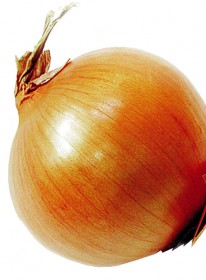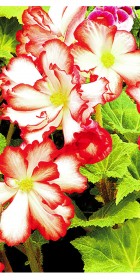You have to be very careful about applying too much nitrogenous fertilizer to onions, otherwise the bulbs will become too soft and susceptible to diseases like neck rot and downy mildew, especially if there is a wet period when they are growing and when good drainage become critical. Otherwise onions really don’t give too much trouble, and the most superb onions can be grown in Guyana. Once the onions have reached the right size the tops should be bent over. This exposes them to the sun and helps to ripen them beautifully. Some growers dig them up when they are fully grown, shake the soil off, and leave them on the surface to ripen.
I have in the past been a very keen owner of the dwarf Chinese bamboo, and have recently ‘discovered’ the variegated form of it in Europe which has the name Pleioblastus chino ‘Tsuboi.’ Heaven knows what its name is in the USA, but it’s likely to be simpler. Neither the green form or the variegated form are invasive, and make the most wonderful compact clumps in the garden. Definitely worth a go, as is the Pampas grass which is a South American native. Pampas grass normally produces the most attractive white plumes, but there is a pink form which has its place in the garden. Both are long flowering, and plumes can be cut and used in the house for
months on end.


Of course, young seedlings ought not to be exposed to the direct sunlight or they’ll just shrivel up and die, but they must have good light or they will become long and lanky and have a tendency to fall flat on their collective faces. Always bear in mind when you are sowing that you have to sow sparingly, unless you are to supply the entire village.
Always a good idea to place the seed in your cupped hand. And then tap your hand gently so that seed falls onto the compost in very small quantities. Always sow seed when there is no wind or when you are working in a sheltered place.

The same really applies when you are working outside, say sowing carrots, onions, beetroot, lettuce or tomato. With the seeds I’ve just mentioned make a drill about an inch deep with a piece of plank, sow the seed thinly, and cover. Sand can be used to cover the seed, and to mark the rows. It’s always good practice of course to label each row to tell yourself what’s there.
Soon it will be Christmas and I guess you will no doubt be frantic with all the preparations for this joyous festive season, but do take care and may your God go with you wherever you may be.





